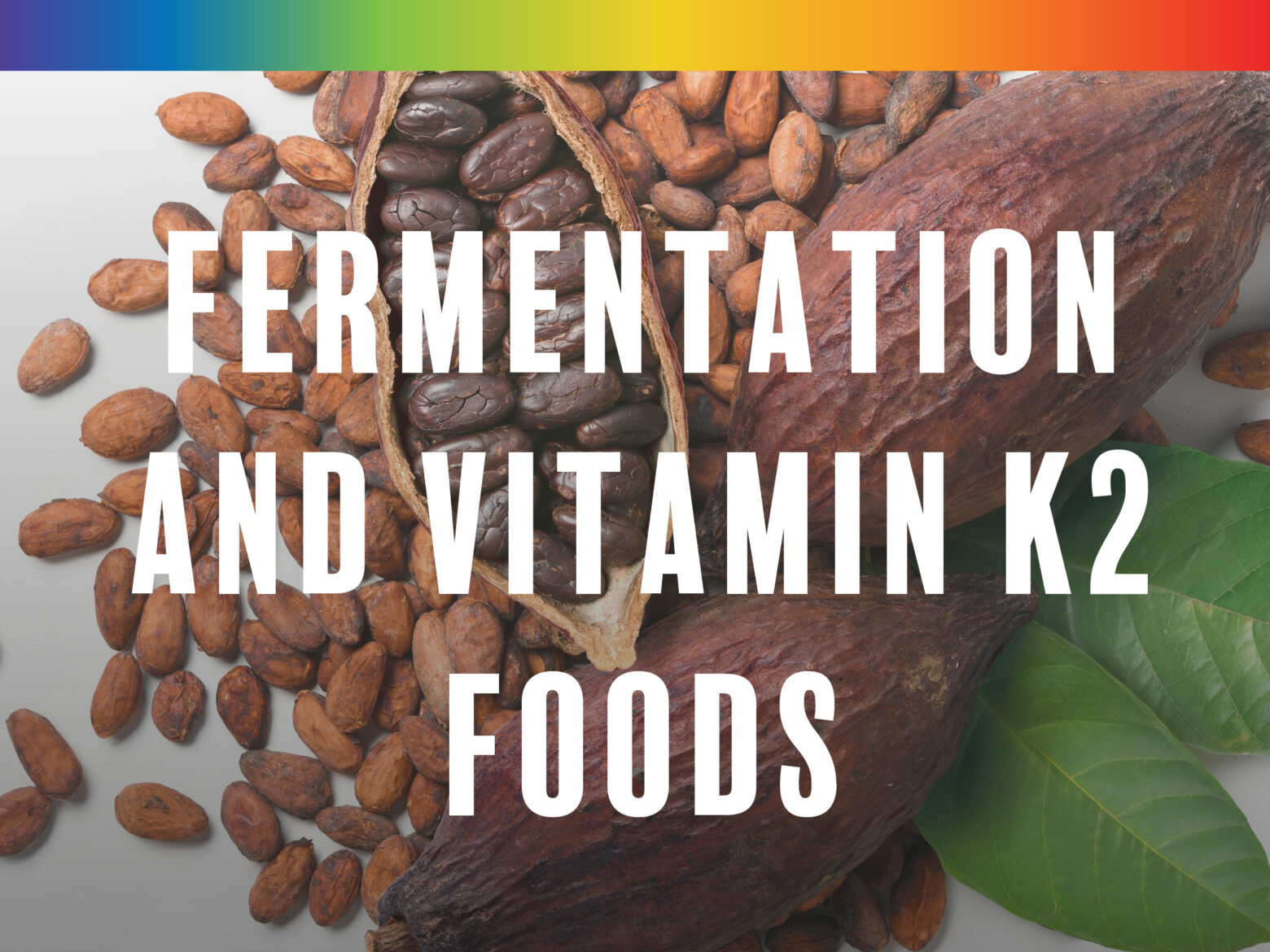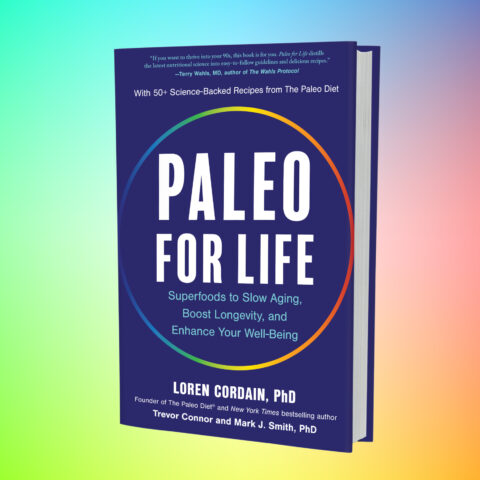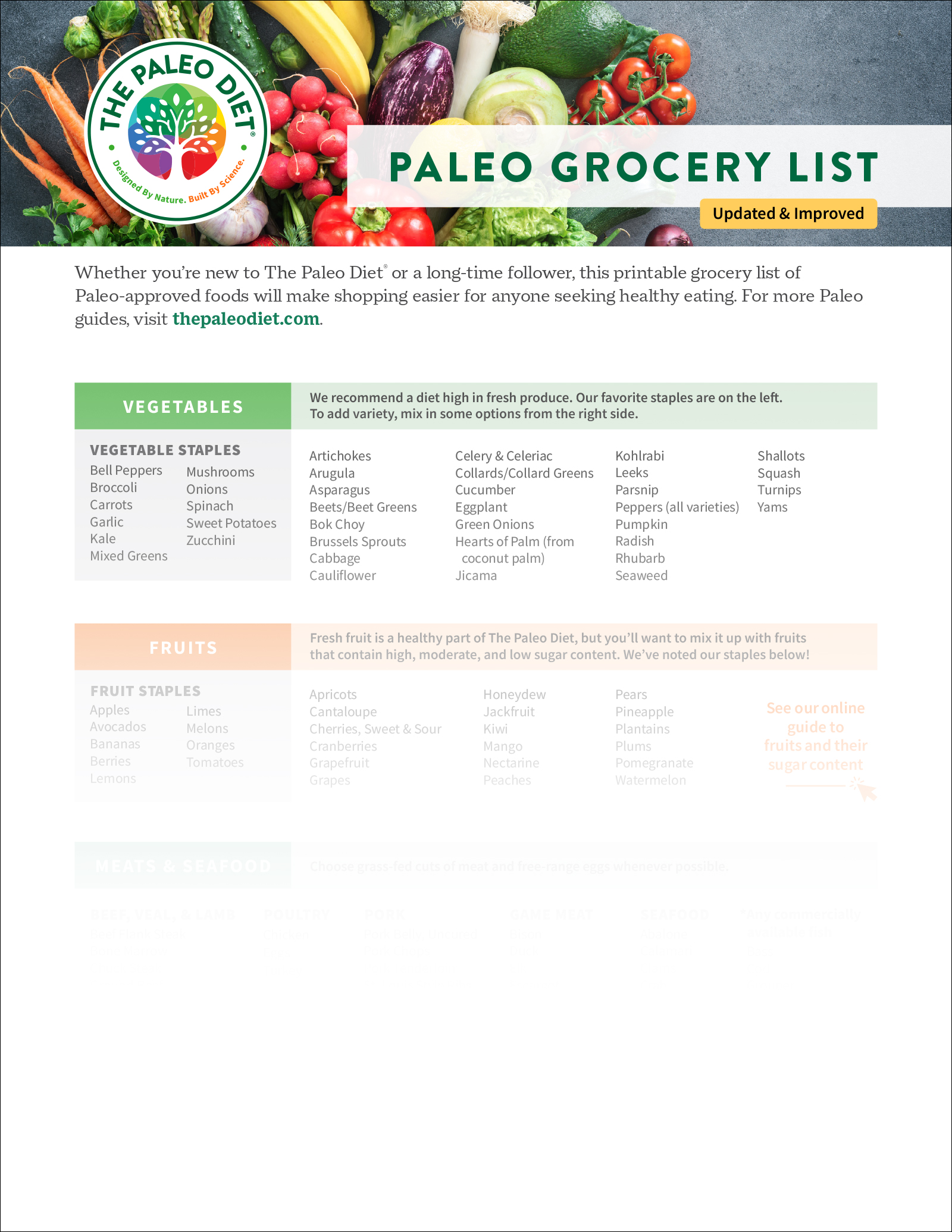Fermentation, Vitamin K Foods, and Vitamin K2
Loren Cordain, Ph.D., M.S., Mark J. Smith, Ph.D., Ph.D., Trevor Connor, M.S.

This article on fermented, vitamin K foods, and vitamin K2 is an excerpt adapted with permission from the book Paleo for Life: Superfoods to Slow Aging, Boost Longevity, and Enhance Your Well-Being by Dr. Loren Cordain, Trevor Connor, and Dr. Mark J. Smith. In this groundbreaking guide, the leaders of the Paleo nutrition movement reveal the longevity superfoods that can help you live longer and better, starting today.
“I can’t believe I overlooked it for my earlier books.”
That’s what Dr. Loren Cordain said during a meeting of The Paleo Diet® staff in 2020 while planning the manuscript of Paleo for Life. “Our ancestors have been eating fermented foods for most of our evolution, as far back as 10 million years. Fermented and rancid foods are very high in vitamin K2, which is a key longevity vitamin. And guess what? Vitamin K2 only comes from fermenting or rancid foods or eating animals that eat a lot of those.”
Clearly, eating fermented food would have been a key part of the diet of our ancestors for millions of years of our evolution. Early humans knew nothing about refrigeration. Smoking foods has a limited preservation effect. Salting foods is more effective, but it’s a very recent invention only seen in the archaeological record for about as long as agriculture, roughly 5,000-12,000 years.
Because we were often eating food that was fermented or rancid or going bad from bacterial processes, we would have been getting a lot of vitamin K2 in our diet.
The theory goes like this:
- Because the common ancestor of humans and other primates relied heavily on fruits for nutrition, and because ripe fruits have a higher ethanol content than fruits that aren’t yet ripe, early humans would have developed a sensory bias for the smell of ethanol in fermented fruits.
- Other early humans may have sought out fermented foods because these foods were essentially predigested, which would have made it easier for foraging humans to get the nutrients they needed.
- Finally, early humans often had to eat the remains of kills from larger animals. As a result, they didn’t always have the option of fresh meat and had to eat animal remains that had started to rot or ferment. And of course, they didn’t have refrigeration, so they often didn’t have the option to eat fresh food.
Whatever the reason, early humans developed two specific gene variants associated with increased fermented food consumption about 10 million years ago, before humans diverged from African apes.
Fermentation Makes Foods More Nutritious
Today, the International Scientific Association for Probiotics and Prebiotics (ISPP) defines fermented foods as “food made through desired microbial growth and enzymatic conversions of food components.” In essence, this means that healthy microbes are allowed to partially digest the food before we eat it.
Microbial fermentation can convert food into nutritionally richer products by adding microorganisms that help your body fight against gastrointestinal diseases and provide metabolites that support the gut biome. When administered in adequate amounts, these microorganisms confer healthy benefits and are called “probiotics,” according to the ISPP. The microorganisms most often used in fermented foods include acetic acid bacteria, yeasts, and lactic acid bacteria.
RELATED: Want to Promote Lasting, Healthy Weight Loss? Support Your Gut
Health Benefits of Fermented Foods
Consuming probiotic fermented foods is associated with a number of health benefits, including preventing and treating atherosclerosis, cardiovascular disease, cognitive issues, and metabolic disorders. These foods are also associated with boosting the immune system and supporting a healthy gut biome. And, when researchers screened the American National Health and Nutrition Examination Survey to identify links between diseases and live microbe intake, they found that eating fermented foods may be beneficial in lowering systolic blood pressure, inflammation, and insulin and triglyceride levels.
However, because so many popular fermented foods also contain a great deal of salt, like kimchi, or are dairy based, like yogurt, their fermentation health benefits are far outweighed by the health consequences of high sodium and dairy fats, so we do not include most of them in The Paleo Diet. Though some foods can be modified to be dairy free or salt free:
Vitamin K2 Is Crucial to Healthy Longevity
Scientists recognized the importance of vitamin K decades ago when they realized it plays a crucial role in helping blood clot and in supporting many other physiological functions. Since then, they’ve recognized two different forms of this essential nutrient. One of these is vitamin K1 (phylloquinone), which is synthesized in algae, plants, and some bacteria. The other is vitamin K2 (menaquinone, pronounced “mennuh-QUIN-ohn”), which is divided further into MK-4 through MK-13 subtypes.
All menaquinones are fat-soluble. Animals, including humans, have difficulty excreting fat-soluble vitamins, so we tend to store them in our fat tissue.
Vitamin K2 Has Subtypes
While all the vitamin K2 menaquinone subtypes have been grouped under the name vitamin K2, that’s a bit of a misnomer. Each menaquinone is unique, with discrete physiological functions. For that reason, we need to make sure we are getting adequate MK-4 through MK-13. It’s most important for longevity to get enough of the longer-chain vitamin K2 (MK-7 through MK-13) because those subtypes appear to be the most effective at combatting chronic diseases.
While our bodies can convert vitamin K1 into MK-4, all other menaquinone variants can be produced only by bacterial fermentation. That means humans can only get the vitamin K2 menaquinones MK-5 through MK-13 in three ways:
- We can get vitamin K2 from some fermented foods like dark chocolate.
- We can get some subtypes of vitamin K2 when bacteria in our gut ferment some of the foods we eat.
- We can get them from eating animals that eat and store a lot of vitamin K2. For example, pork has one of the highest concentrations of menaquinones because pigs like to eat rancid food, which is high in long chain menaquinones. Since menaquinones are fat-soluble, the vitamin K2 in pork is found in the fattier cuts of meat.
Pork and Chocolate Are Very High in Vitamin K2
Pork and chocolate have some of the highest concentrations of vitamin K2 of any foods. Chocolate is very high in menaquinones because it is created by bacteria during the fermentation of cacao beans. Pork is so high because pigs tend to eat a lot of rotted and rancid foods that are high in vitamin K. Because vitamin K2 is fat soluble, it gets stored in the fatty parts of the pig, which is why levels of vitamin K2 are highest in the fattiest cuts of pork. Fatty pork cuts such as St. Louis style ribs represent one of the best dietary choices for maximizing your intake of vitamin K2.
Paleo for Life
Paleo for Life reveals how your favorite foods and flavors can help you live a longer, healthier life.
Discover the most potent antiaging superfoods and see how what’s on your plate connects to how you feel each day. Includes a two-week meal plan and 50+ superfood recipes.
Live longer and better, starting today, with Paleo for Life.




